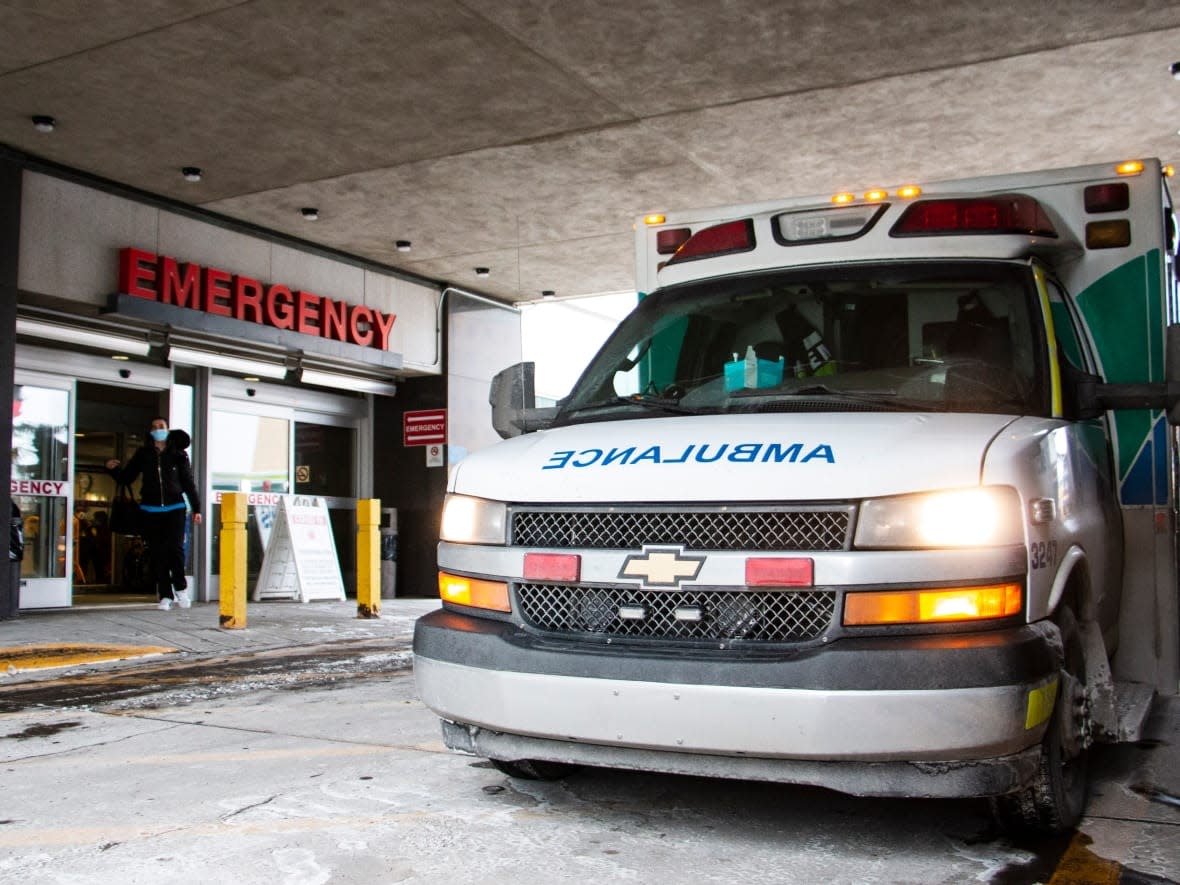Calgary patients treated in ER hallways as paramedics needed for 911 calls

Calgary's ambulance service and hospitals are so stressed that this week patients normally cared for by paramedics were quickly handed off to already stretched hospital staff — in the hallways — so EMS crews could get back on the road and respond to 911 calls.
An internal Alberta Health Services memo obtained by CBC News called the situation a "historic event" in Calgary that led to "unprecedented pressure" on doctors and nurses as EMS crews were instructed to "offload patients and transfer them to [emergency department] care within 15 minutes of arrival."
"This is a crisis," said Mike Parker, president of the Health Sciences Association of Alberta, the union that represents paramedics in the province.
According to Parker, 10 ambulances were parked in Calgary on Monday night due to staffing shortages. Alberta Health Services has yet to confirm this number, despite inquiries from CBC News.
The union has been raising the alarm about the number of so-called red alerts — when no ambulances are available for new calls — for months.
According to Parker, chronic shortages of paramedics have been compounded by high numbers of staff off sick or isolating due to COVID-19 and burnout.
"The entire system is under this immense pressure. This is a key indicator of how bad it truly is," he said.
Normally, Parker said, EMS crews stay with patients in the ER — providing treatment such as pain control — until hospital staff have the capacity to take over. This can take hours.
"In this case, they're being pushed off or offloaded to wheelchairs, and the paramedics are getting back on the street because there's calls waiting still that have nobody responding to them," he said.

Patients treated in hallways
Calgary emergency rooms, already struggling with backlogs of patients waiting for beds elsewhere in the hospital as the pandemic drags on, managed to cope, according to Dr. Eddy Lang, the head of emergency medicine in Calgary.
But it was difficult.
Lang said nurses were assigned on Monday to take care of these additional patients in the hallway so paramedics could get back on the road to deal with other emergencies.
"There still was no place for them," said Lang, who co-wrote the leaked memo.
"From what I understand, nurses were assigned to these patients in the corridor allowing the EMS crews to get back onto the road. So they became our patients out in the hallway, whereas normally they only … formally become our patients when they come inside."
He said doctors also treated and evaluated patients in emergency department hallways.
"It's a reflection of the strain on the system as a whole because I'm convinced that if the patients who we had in the emergency department, who've already been admitted — we know what they have, their treatment has started, we just don't have a bed upstairs — if they had timely access to their upstairs bed, which they're waiting for, we wouldn't have an EMS offload problem."
Parker said the urgent download system is designed for mass casualty incidents, not routine use. But it's happening more and more often, including in Edmonton and Medicine Hat.
Practice reserved for 'extremely high demand'
"That's something that's not normally practised in Alberta, but it's a routine practice in Quebec, where they have the same issues — they can't get EMS patients into the department," said Lang.
Despite the memo referring to the situation being "unprecedented," an AHS spokesperson said Calgary has used this protocol before, but the spokesperson did not provided details about when.
"From time to time, when pressure on the EMS system is high, EMS and our hospital teams have the ability to employ an expedited transfer of care," the statement said.
"This transfer of care is initiated when multiple ambulances are waiting at hospitals to offload patients."
AHS said the practice is not new. But it is used only in times of "extremely high demand," and patients are handed off only if it is safe to do so. The most critical patients, the health authority noted, are prioritized for receiving immediate care.
"EMS continues to see an unprecedented increase in emergency calls due to several combined factors, including the COVID-19 pandemic, opioid concerns and emergency calls related to people returning to regular levels of activity," said the spokesperson.
"All call types have increased, and staff illness and fatigue, as well as weather considerations, are also contributing to challenges in the EMS system."


